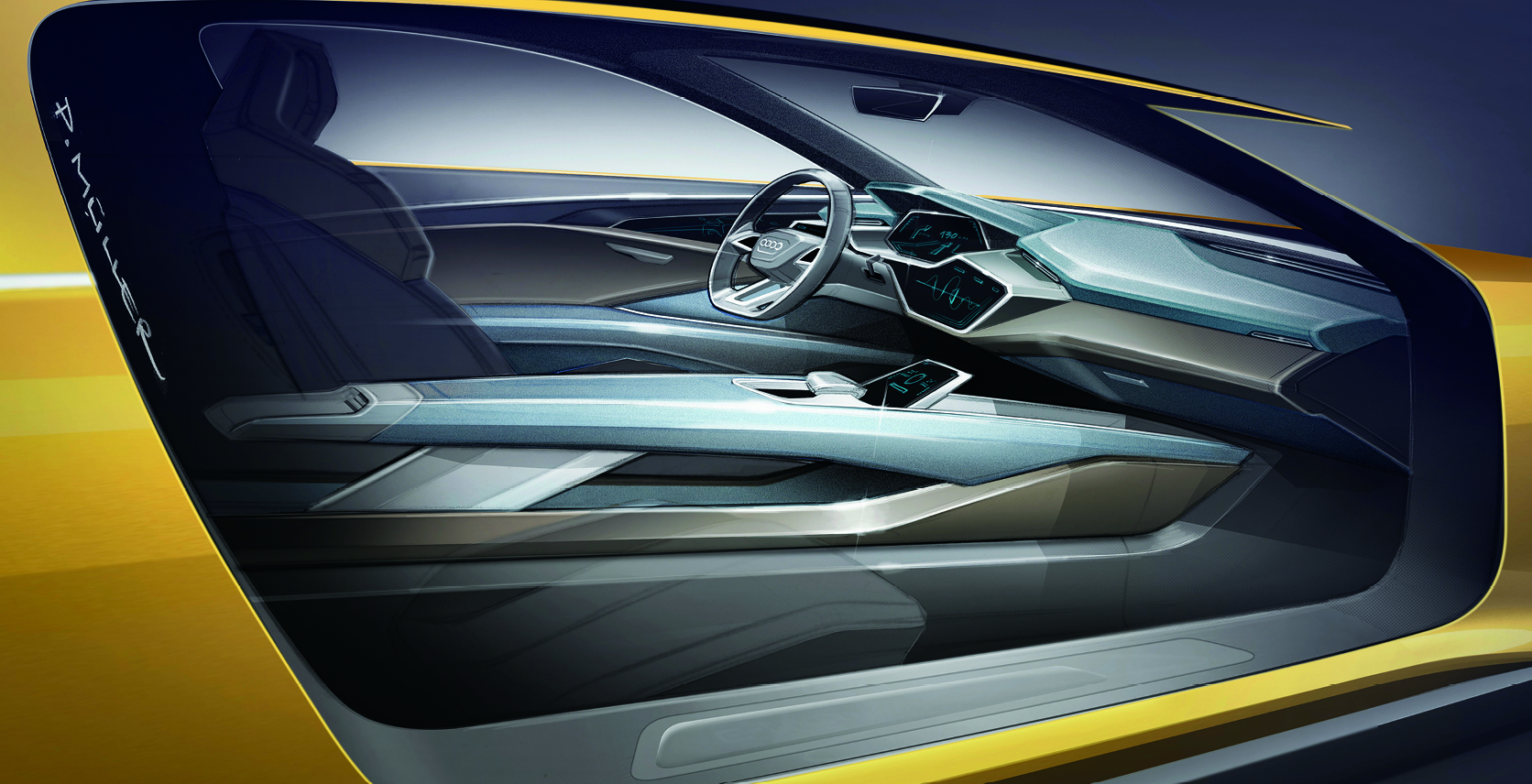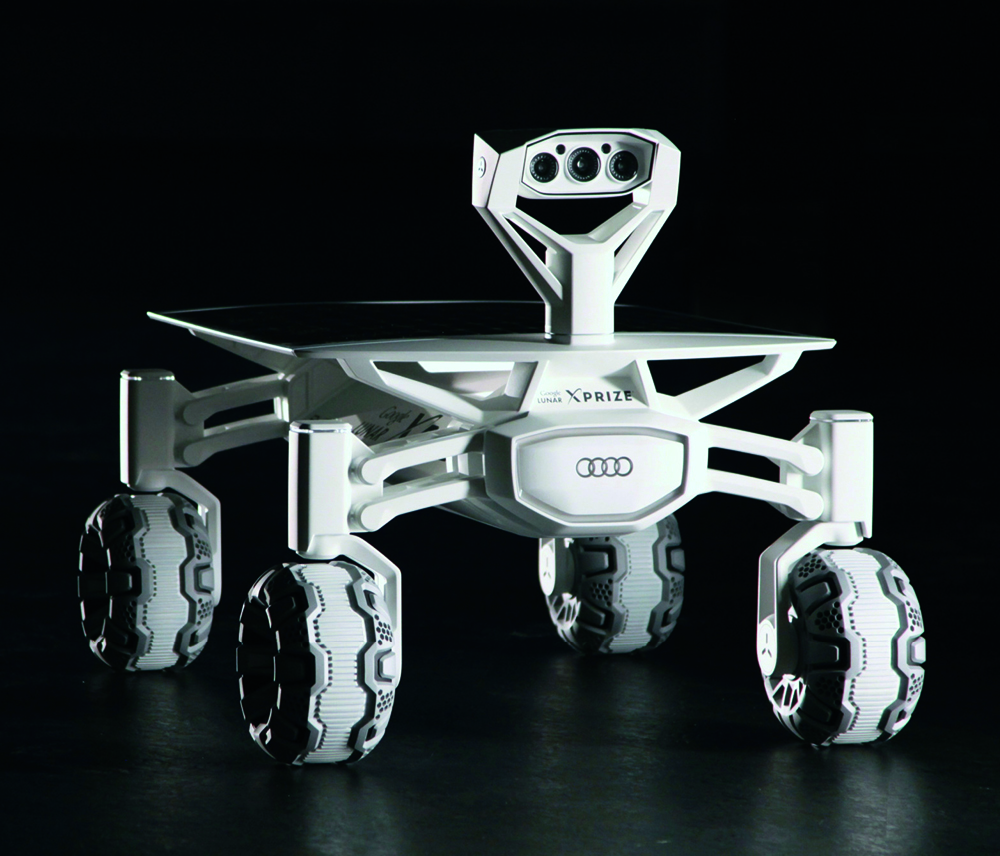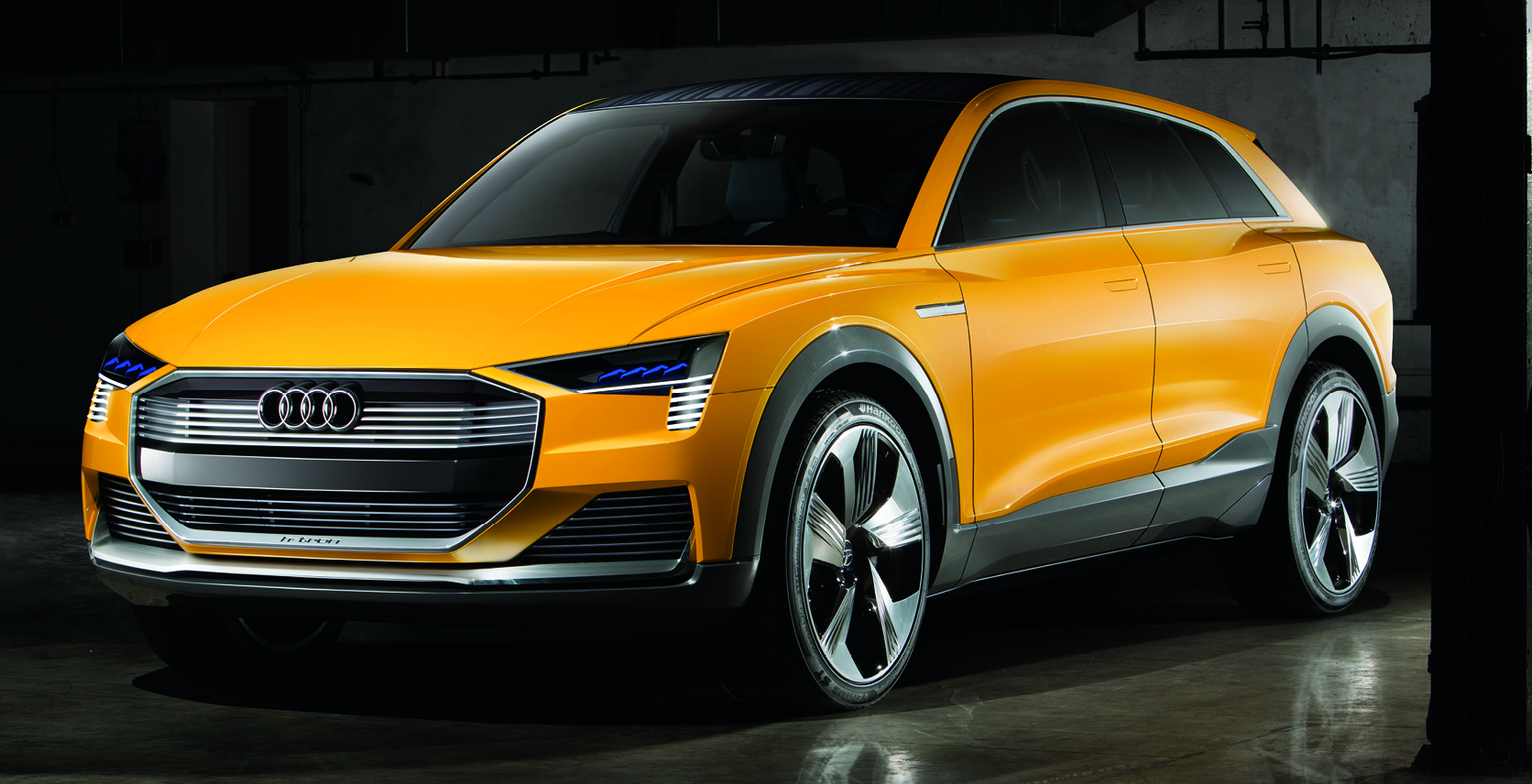The Audi H-Tron Quattro Concept Is Out of This World
At a recent auto show, where everyone else catching up with their favourite auto brands was only looking so far as the next year’s model, there was a small team from Audi that had been looking much further, and higher.
They were imagining what it would take to drive an Audi around the surface of the moon. Yes, Audi wants to put a car on the moon.
A group of 10 engineers from Audi have been working with a German team to win Google’s Lunar XPRIZE. Their vehicle must not only survive being shot from a rocket, it must operate near the moon’s equator, where temperatures fluctuate by 300 degrees Celsius. This is no pie in the sky fantasy. To win the $30-million US prize, the vehicle must launch by the end of 2017.

Maybe the strangest thing about this far-fetched plot is that, looking at Audi’s rover — the Lunar Quattro — it doesn’t seem far-fetched at all. They make it seem perfectly doable. In fact, it’s built with ideas Audi is already using on its earthbound cars: a lightweight aluminum body, forward-looking stereo cameras to detect obstacles, electric battery power.
The high-res camera that can analyze materials likely won’t be coming soon to your next SUV, but solar panels to recharge the vehicle’s batteries might. And all-wheel electric drive is something we could see as soon as this year on Audi’s R8 e-tron.
Cars are supposed to be exciting. They can be imaginative and wild and brilliant. At their best, they don’t just provide transportation, they inspire curiosity. A car should make you want to take a closer look, to get behind the wheel, to find out how it works. To drive the hell out of it. Often that’s lost in the constant shuffle to the next model year. But not for Audi.
At the same major auto show, next to the Lunar Quattro rover, Audi was still dreaming big with a bright yellow SUV. It was a concept called the H-Tron Quattro, and it ran on completely clean, zero-emissions hydrogen. Carbon-neutral personal transportation — something that might be even more unbelievable than putting a car on the moon, but there it was.

It’s not the first time an automaker has dabbled with hydrogen power. BMW did it in 2005. In fact, there are a couple of hydrogen-powered cars on sale now: one from Toyota, another from Honda, and an SUV from Hyundai. But unless you live close to a hydrogen fuelling station — and if you’re living in Canada, you definitely aren’t — buying one doesn’t make much sense.
For years, hydrogen fuel has seemed as though it was on the cusp of becoming a practical alternative to gasoline. The only tailpipe emission a hydrogen fuel cell car emits is heat and water. The idea is that you could fill one up at a regular gas station in minutes, unlike electric cars, which need to be plugged in for hours.
But there are a couple of challenges standing in the way of hydrogen cars. For one, to most people, the Hindenburg is hydrogen’s brand ambassador, and it isn’t a very good one — they see it as highly flammable. But then, so is gasoline, or lithium-ion batteries if constructed poorly. (Besides, as any Hindenburg apologist would tell you — if such a person existed — what you actually see burning in the iconic footage is canvas, not hydrogen.)
Another problem is the fuel itself. It’s not as energy dense as gasoline, it takes more of it to get the same amount of energy out of it. And refining and transporting pure hydrogen isn’t easy. Then there’s the market-defying task of retrofitting gas stations with hydrogen pumps. But still, that seems more plausible than building a network of curbside EV chargers on side streets, parking lots, and highways across every continent.
Perhaps not surprisingly, Audi’s already come up with some clever solutions. For one, Audi has figured out a way to refine hydrogen fuel from water using completely renewable energy. It already has a plant in Werlte, Germany. So not only are there zero tailpipe emissions, but zero global emissions.
The H-Tron has a range of 600 kilometres — more than a Tesla — and filling up the tank takes just four minutes. The hydrogen fuel cell sits under the hood and produces electricity through a complex chemical reaction that makes the inner workings of a combustible engine seem as complex as a picture book. The hydrogen fuel is stored in three tanks, and the electric power is held in a lithium-ion battery until you press the accelerator and it’s put to all four wheels by two electric motors — one at each axle.
Unlike the moon rover, Audi hasn’t given a firm launch date for the H-Tron. For now it’s just a glimpse into one potential future for cars. And it’s exciting. Carbon-neutral personal transportation is the holy grail, a moon shot to be sure, but it looks closer than ever.










